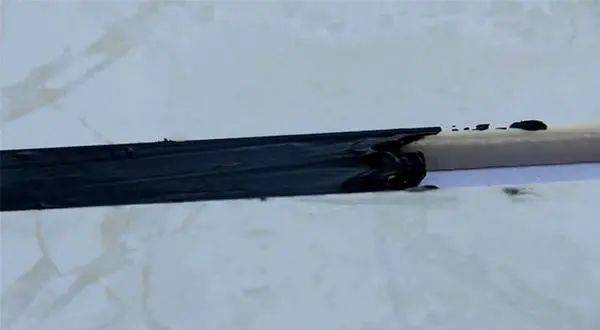Six Ways To Identify Good And Bad Sealants
Thanks to the considerable development prospects of the sealant industry and people's personalized pursuit of life quality, the market has higher and higher requirements for sealant products, and sealant products with good performance, high quality and environmental protection are unanimously favored by people. The quality of sealant products is related to the comfort of living and even safety. Here I share with you 6 ways to learn how to distinguish the quality of silicone sealant !
1. Whether the quality is good, first to smell
Since acetic silicone sealant contains acetic acid, it will produce a sour taste during the volatilization process, but generally speaking, the better the quality of silicone sealant, the lighter the acidity; the worse the quality of silicone sealant, the stronger the acidity (because of the added acetic acid component), At the same time, the odor of good quality silicone sealant disappears quickly during the curing process; while the bad quality silicone sealant, the sour volatilization time is much longer.
 2. Watching gloss is the key
2. Watching gloss is the key
Different quality silicone sealant have different gloss levels after being cast. The color of high-quality silicone sealant has a strong gloss after curing, while some inferior silicone sealant are dull as soon as they are punched out, and some lose their luster after curing for one or two months.
 3. Pay attention to the particles
3. Pay attention to the particles
The high-quality silicone sealant is fine and uniform, and the surface of the adhesive strip is flat and smooth after curing.
Inferior silicone sealant can see particles and debris, and the surface of the adhesive strip after curing is uneven and not smooth.
4. The air bubbles
High quality silicone sealant contains 100% silicone without air bubbles when applied.
Inferior silicone sealant contain various additives and have bubbles when curing.
The main component of high-quality sealant is silicone, and the amount of other additives is very small. Pure silicone has good stability, and it is minimally affected by changes in external conditions during the storage period, and there will be no "pop" and "pop" bubbles noise caused by the sealant being mixed with air in the bottle during sizing.
 5. Check the hardness after curing
5. Check the hardness after curing
After applying, the user should first check the surface drying time of the sealant according to the instructions on the product packaging. If the time is too short or the overtime is too long, it means that the quality of the sealant has problems (of course, the influence of environmental conditions should also be considered. ), and then after the curing is completed (the curing time should also be specified by the manufacturer), try the hardness and elasticity of the sealant by hand, too hard or too soft means not a good quality, you can also cut the section of the sealant to test whether the curing effect inside and outside the sealant is consistent.
6. The difference in tensile force
The tensile strength and peel strength (the adhesion) of the cured silicone adhesive also vary depending on the quality of the silicone. The tensile force of high-quality sealant is extremely strong, the stretching range is large, and the anti-peeling strength is high, and the opposite is true for inferior sealant.
1. Whether the quality is good, first to smell
Since acetic silicone sealant contains acetic acid, it will produce a sour taste during the volatilization process, but generally speaking, the better the quality of silicone sealant, the lighter the acidity; the worse the quality of silicone sealant, the stronger the acidity (because of the added acetic acid component), At the same time, the odor of good quality silicone sealant disappears quickly during the curing process; while the bad quality silicone sealant, the sour volatilization time is much longer.

Different quality silicone sealant have different gloss levels after being cast. The color of high-quality silicone sealant has a strong gloss after curing, while some inferior silicone sealant are dull as soon as they are punched out, and some lose their luster after curing for one or two months.

The high-quality silicone sealant is fine and uniform, and the surface of the adhesive strip is flat and smooth after curing.
Inferior silicone sealant can see particles and debris, and the surface of the adhesive strip after curing is uneven and not smooth.
4. The air bubbles
High quality silicone sealant contains 100% silicone without air bubbles when applied.
Inferior silicone sealant contain various additives and have bubbles when curing.
The main component of high-quality sealant is silicone, and the amount of other additives is very small. Pure silicone has good stability, and it is minimally affected by changes in external conditions during the storage period, and there will be no "pop" and "pop" bubbles noise caused by the sealant being mixed with air in the bottle during sizing.

After applying, the user should first check the surface drying time of the sealant according to the instructions on the product packaging. If the time is too short or the overtime is too long, it means that the quality of the sealant has problems (of course, the influence of environmental conditions should also be considered. ), and then after the curing is completed (the curing time should also be specified by the manufacturer), try the hardness and elasticity of the sealant by hand, too hard or too soft means not a good quality, you can also cut the section of the sealant to test whether the curing effect inside and outside the sealant is consistent.
6. The difference in tensile force
The tensile strength and peel strength (the adhesion) of the cured silicone adhesive also vary depending on the quality of the silicone. The tensile force of high-quality sealant is extremely strong, the stretching range is large, and the anti-peeling strength is high, and the opposite is true for inferior sealant.
 English
English  日本語
日本語  ภาษาไทย
ภาษาไทย  한국어
한국어  العربية
العربية  Latine
Latine  Español
Español  Português
Português  русский
русский  Français
Français  Deutsch
Deutsch  tiếng Việt
tiếng Việt  Italiano
Italiano  Nederlands
Nederlands  Polski
Polski  Svenska
Svenska  magyar
magyar  Malay
Malay  বাংলা ভাষার
বাংলা ভাষার  Dansk
Dansk  Suomi
Suomi  हिन्दी
हिन्दी  Pilipino
Pilipino  Türkçe
Türkçe  Gaeilge
Gaeilge  Indonesia
Indonesia  Norsk
Norsk  تمل
تمل  český
český  ελληνικά
ελληνικά  український
український  Javanese
Javanese  فارسی
فارسی  தமிழ்
தமிழ்  తెలుగు
తెలుగు  नेपाली
नेपाली  Burmese
Burmese  български
български  ລາວ
ລາວ  Қазақша
Қазақша  Euskal
Euskal  Azərbaycan
Azərbaycan  Slovenský jazyk
Slovenský jazyk  Македонски
Македонски  Lietuvos
Lietuvos  Eesti Keel
Eesti Keel  Română
Română  Slovenski
Slovenski  मराठी
मराठी  Srpski језик
Srpski језик 


